Sano Shuji, our Great Mushroom Teacher

Sano-san is our great friend and ‘shishō’ 師匠- the Master – of all things fungi. Check out my story in Kyoto Journal, issue 104, ‘A Fascination with Fungi’, or drop by the Kyoto Imperial Palace Gardens once a month to join Sano-san on one of his brilliant Sunday morning fungi forays. Mrs A. and I are usually there. There is a Japanese translation of the text included, if you wish to show it to a Japanese friend (or are Japanese yourself 笑).
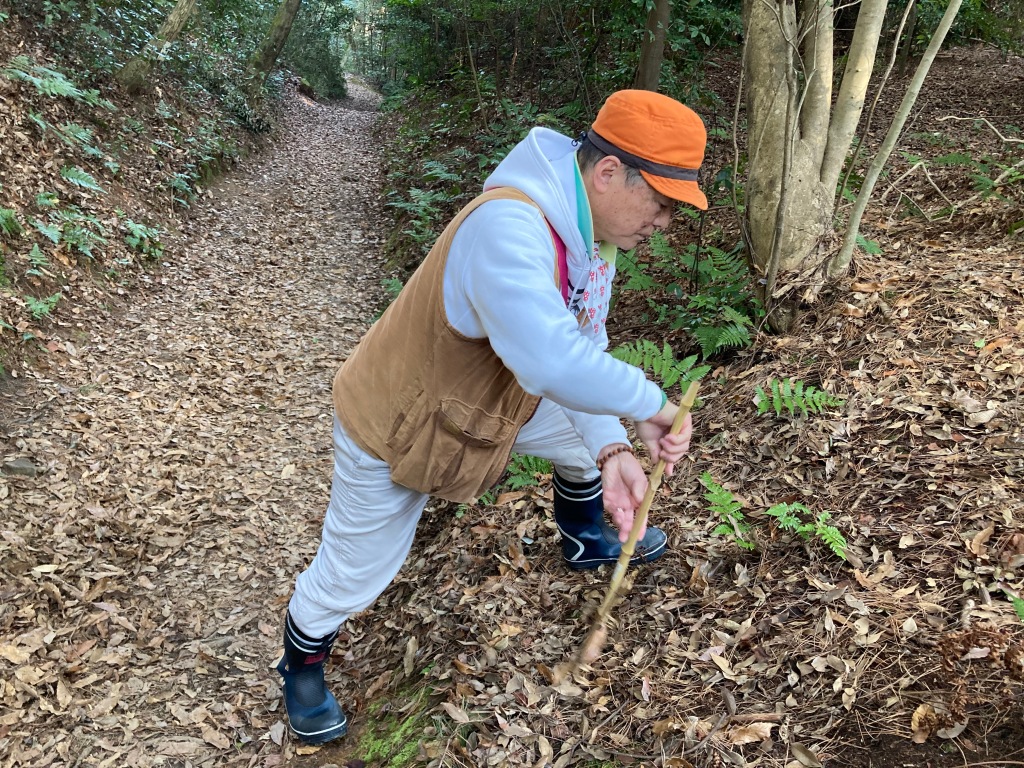
Sano-san will also be leading a Mushroom hunt to coincide with the Kansai Mycological Club’s 30th annual mushroom event on Saturday 28th October from 2 to 3 pm in the Kyoto Botanical Gardens . I’ll be at the venue providing English translation, though likely in the main exhibition space, not Sano-san’s lecture.
Dates: October 28 (Saturday) to October 29 (Sunday), 9:00 a.m. to 5:00 p.m. (until 4:00 p.m. on the last day). Why not bring along a mushroom or two and get it identified by the experts.
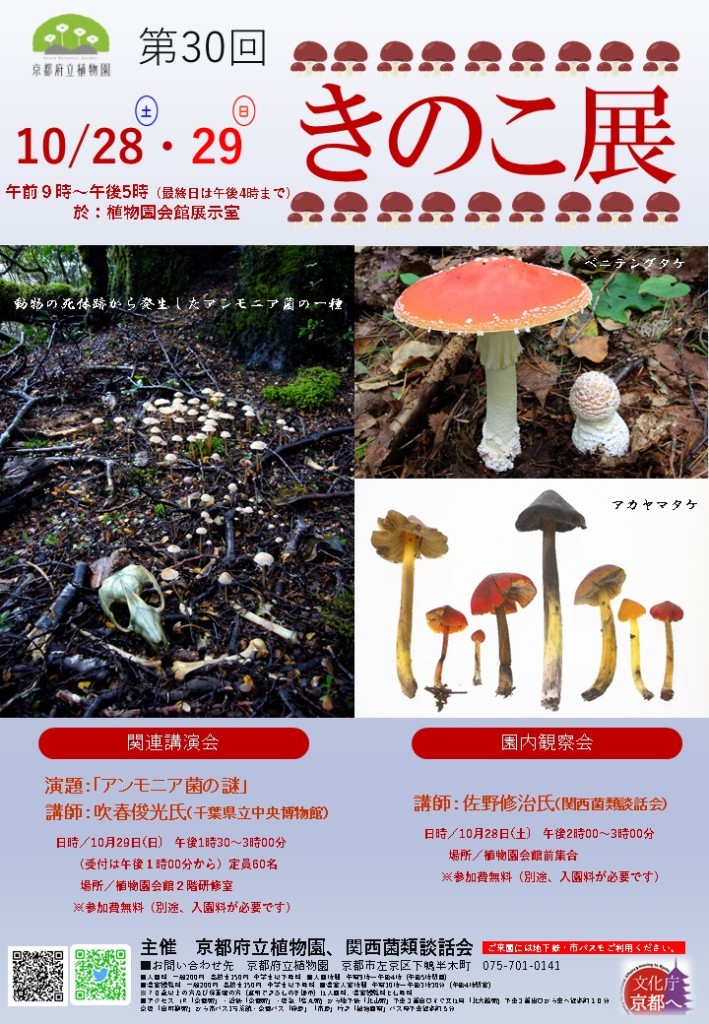
The following pics are from the Botanical Gardens event in 2019:
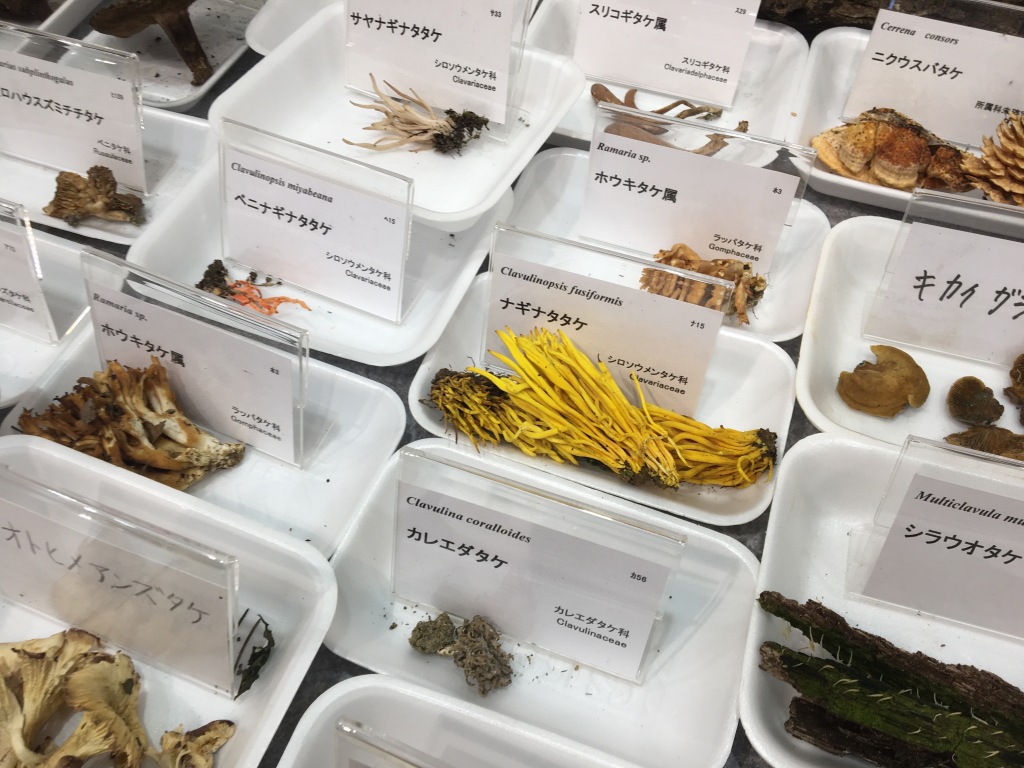
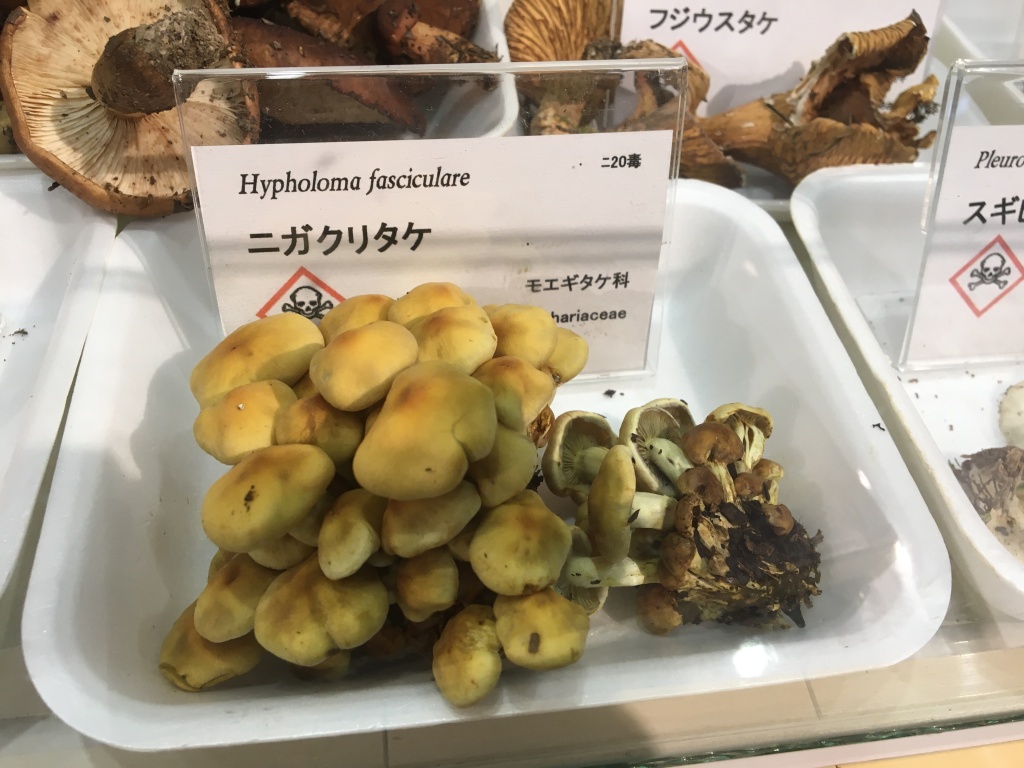
This is one of the Sunday-morning Kyoto Imperial Gardens forays led by Sano Shuji:
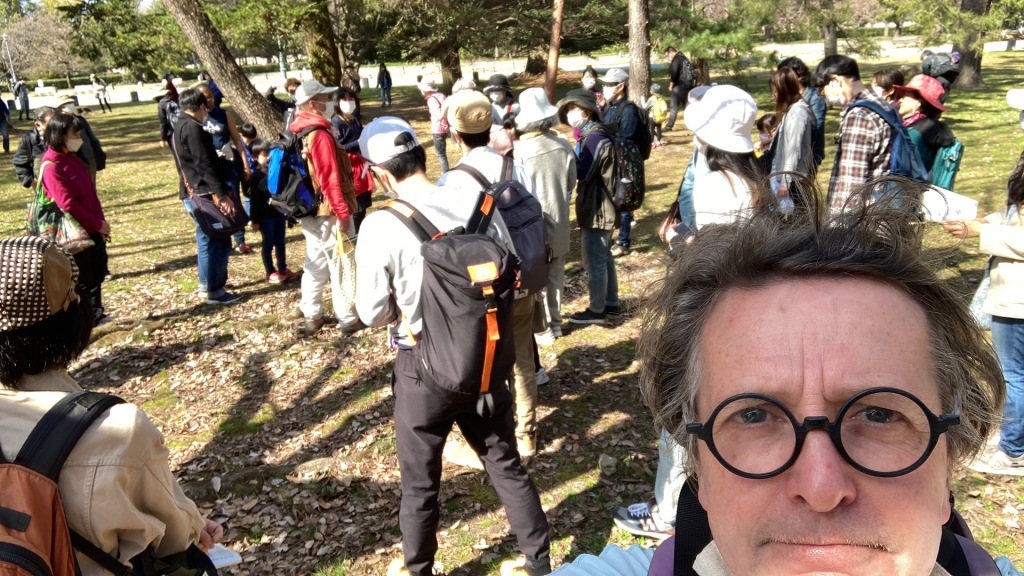
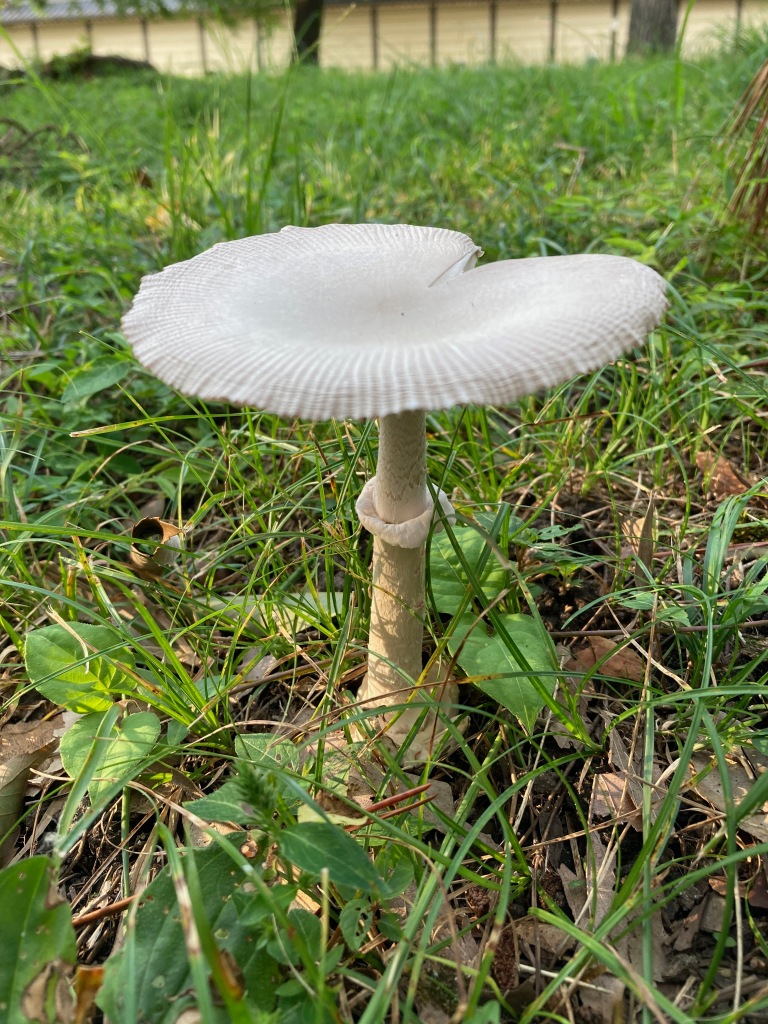
Kew Releases State of the World’s Plants and Fungi 2023 & Global Fungal Review
State of the World’s Plants and Fungi 2023/plus open-access, global review of fungal diversity
[October 11th, 2023] Kew writes: Our fifth report in the State of the World’s series lays out the current condition of the world’s plants and fungi globally, and is titled ‘Tackling the Nature Emergency: Evidence, gaps and priorities’
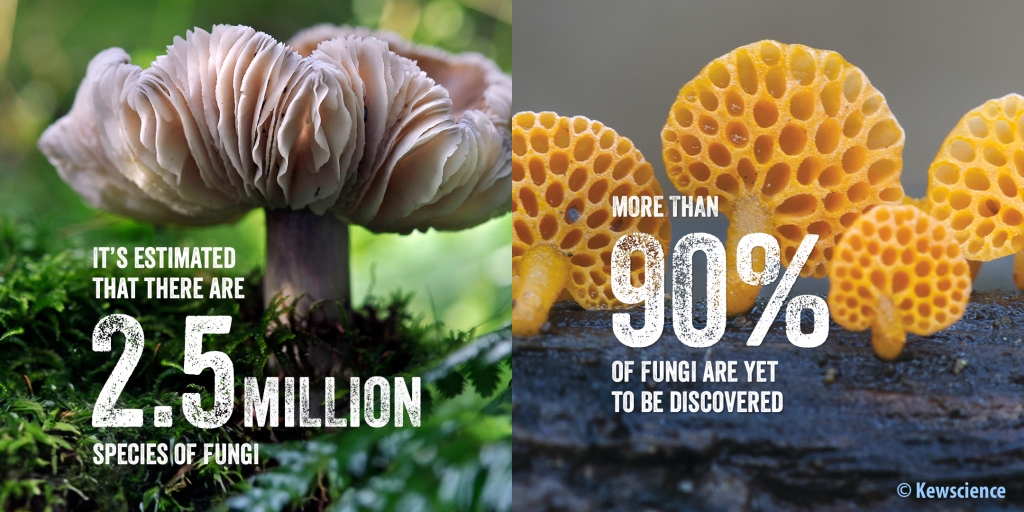
It is the second report that is accompanied by a full volume of expert-reviewed scientific publications from our partners, the New Phytologist Foundation. Their special collection on ‘Global Plant Diversity and Distribution’ includes open-access papers published in the journals New Phytologist and Plants, People, Planet.
In parallel, an open-access, global review of fungal diversity is published in the Annual Review of Environment and Resources. More info here: https://www.kew.org/science/state-of-the-worlds-plants-and-fungi Twitter link to Kew Mycology here: https://twitter.com/kewscience/status/1711676629380923597?s=12&t=R0_LjyTJmE7FJQt-GVxvVg
You can download the SOWPAF 2023 PDF here
The Global Fungal Review paper PDF may be downloaded here:
How to Make Simple Medicinal Mushroom Extracts (part two – the water decoction)

On Your Mark, Get Set, Boil and Simmer
This is second part of the method described in an earlier post, what is known as a double or dual extraction.
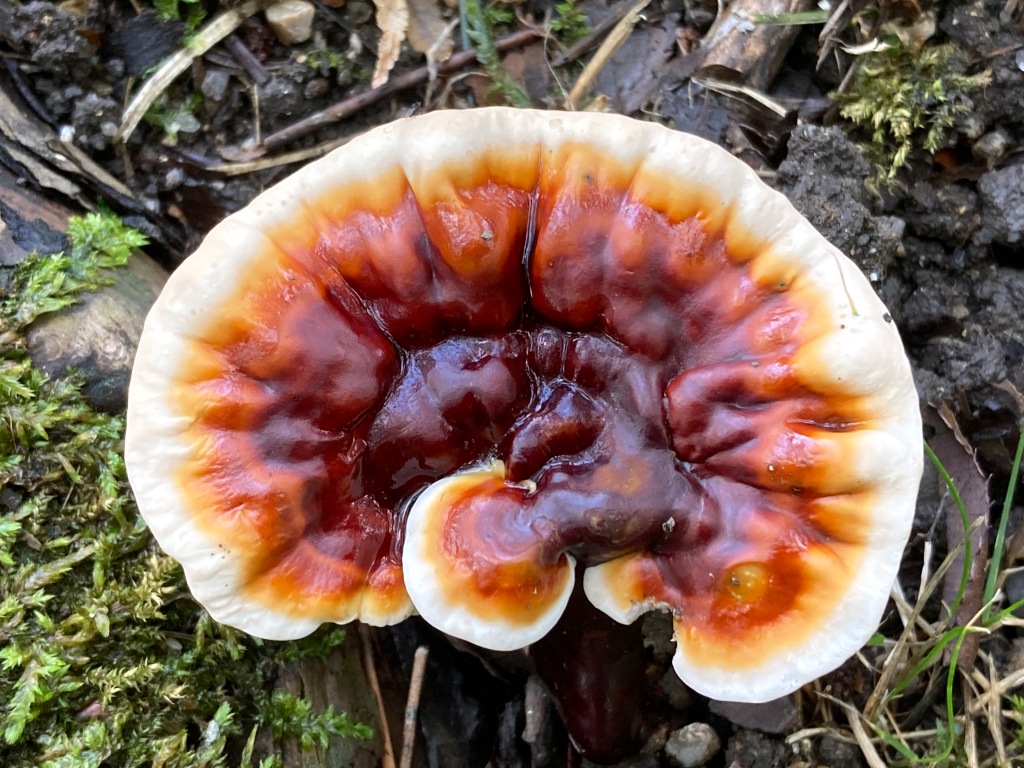
To recap, we are looking at a duel extraction process here, with two steps, using alcohol and water. That is to say, steeping the mushrooms in alcohol (making a tincture) and boiling the mushrooms in water (making a decoction). You can do this with the same batch of mushrooms. Indeed, this is the least wasteful approach, and the most cost effective. You get more out of your mushrooms this way.
However, if you decide to make a tincture with one batch of mushrooms, and a decoction with another set of mushrooms – the other half of your harvest, perhaps – and keep them separate, that’s fine too.
Making the decoction
To begin your ‘marc’, the mushrooms left over from the alcohol soak, or fresh mushrooms, and soak them in water in a large pot. If you are using fresh mushrooms, make sure to scrub off as much dirt – and bugs – as possible. I generally rinse fresh mushrooms, soak them in water for a while, then dry them overnight in my drier. This stops any moud creeping in. The green meanies seem to go for reishi as soon as you bring them out of the forest. Here’s what my drying process looks like:
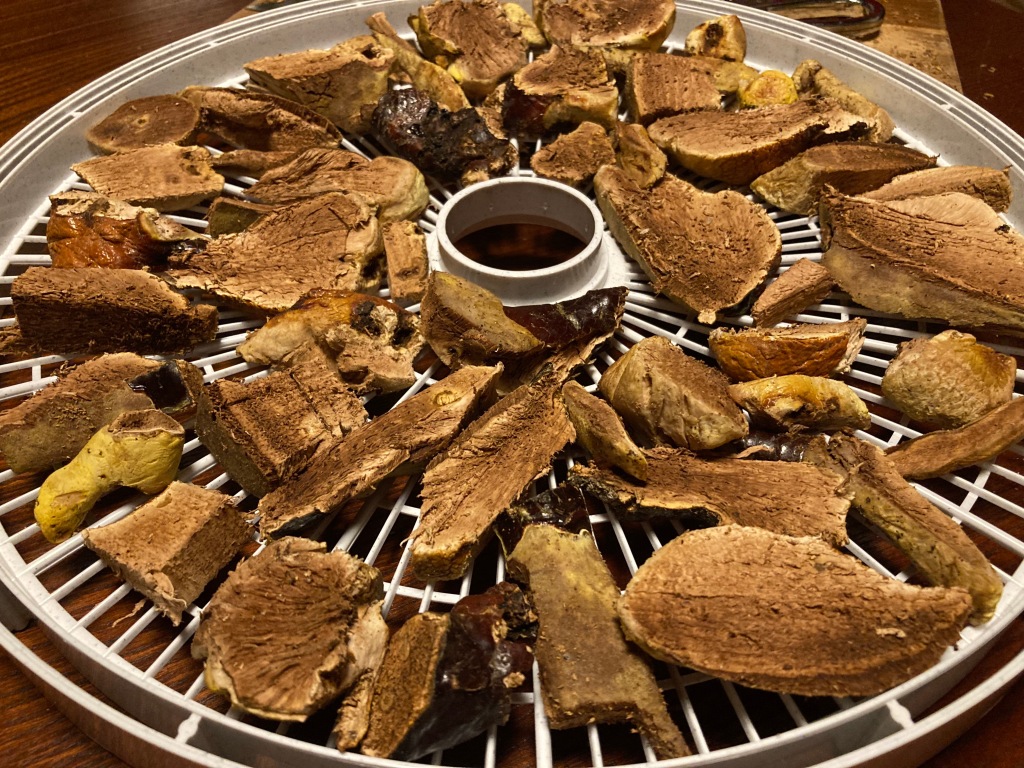
As you’ll not, I sliced these reishi up to dry. They were pretty tough, so it took some effort. I used a saw, a chisel and finally scissors to get them down to size. Younger specimens are easier to slice.

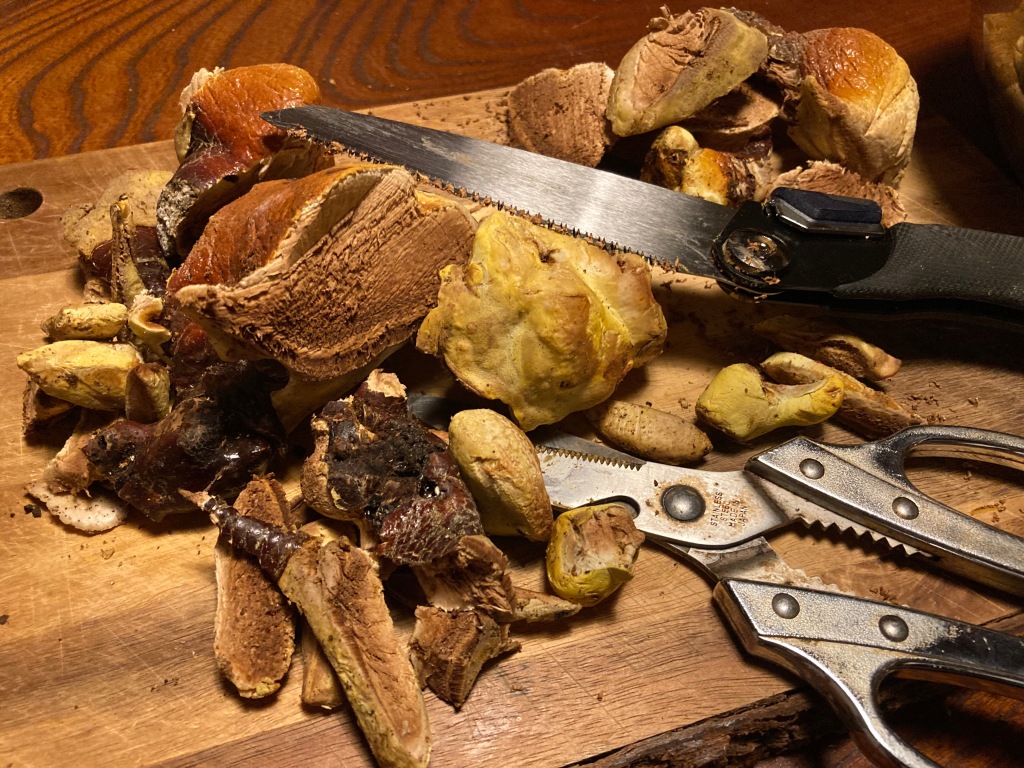
Boiling/Simmering and a Recipe
A quick net search will show you that there are many different recommendations for how long to heat the mixture. I follow my Japanese ‘Mushroom master’ Shuji Sano’s advice.
- Take 50 grammes of Medicinal mushrooms
- Add them 2 litres of water in a large saucepan
- Bring to a boil, then reduce to a simmer
- Let the mixture simmer for an hour, or until the liquid has reduced by half
- Filter off the liquid (I use a kitchen drain net)
- Et voila, you have a litre of Medicinal mushroom decoction.
Sano-san combines 40 grammes of Reishi (Ganoderma lucidum) with 10 grammes of Artist’s Conk (Ganoderma applanatum). How you take it is up to you. Mrs A and I add 25 ml to our morning smoothies, along with several drops of the Medicinal mushroom tincture mentioned previously.
Kew Mycology/Gay Icons as Fungi
Or is that Fungi as gay Icons? To celebrate Pride Month in the UK, the Kew Gardens Mycology department came up with these fun images. Which is your favourite?
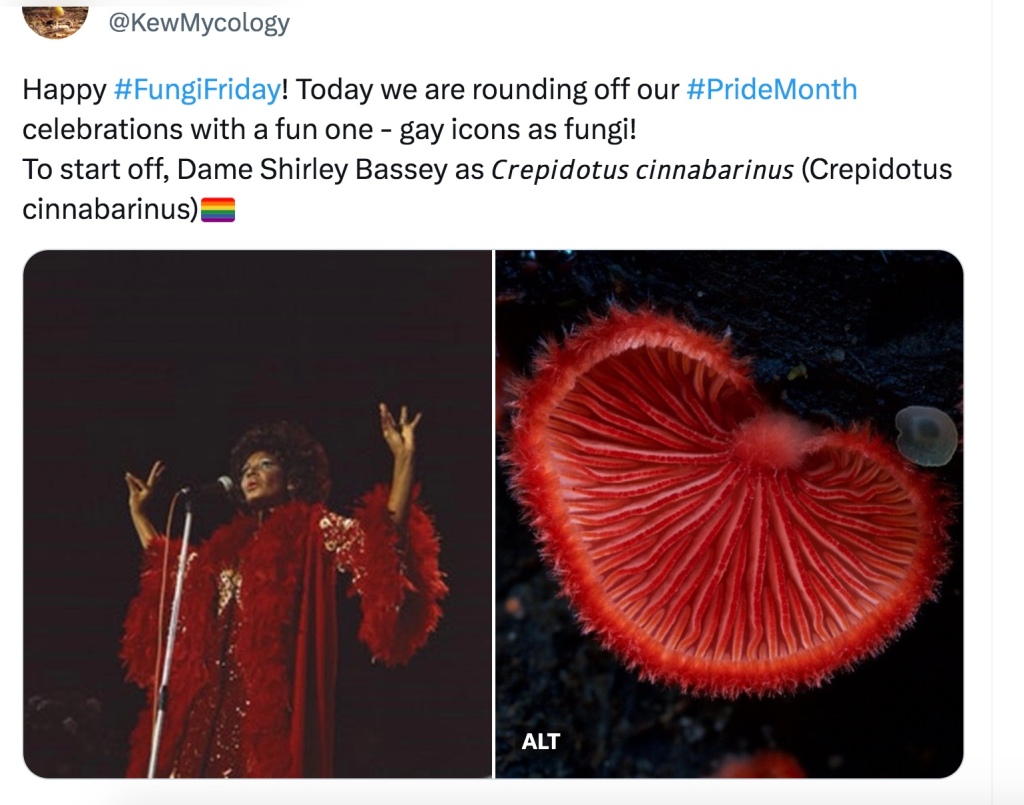
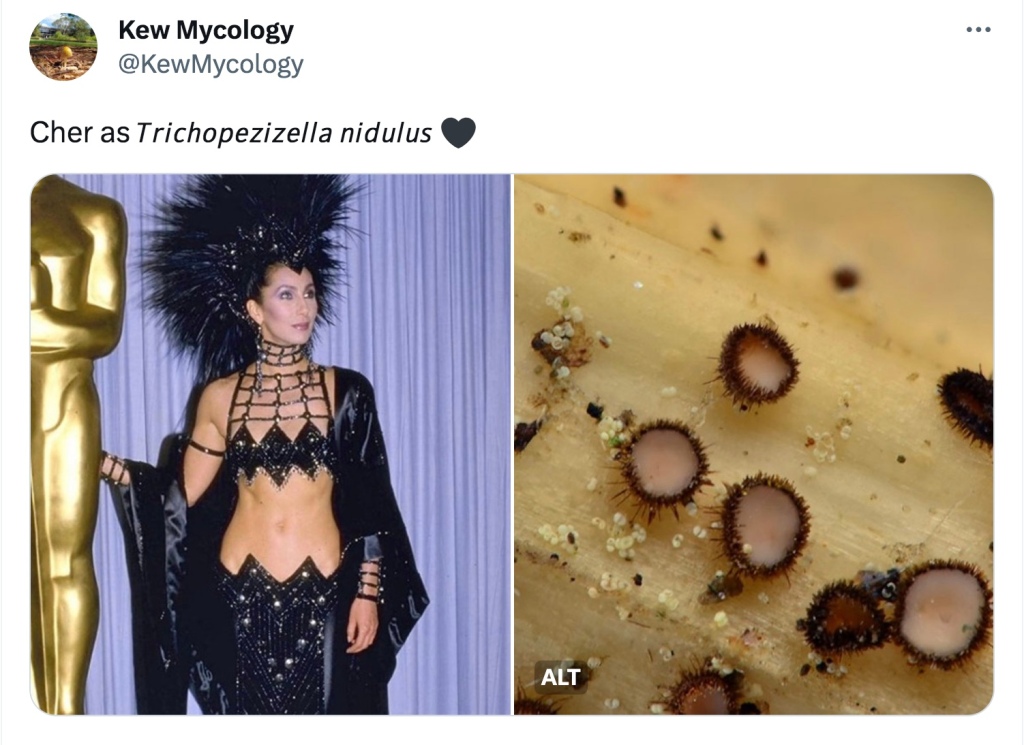



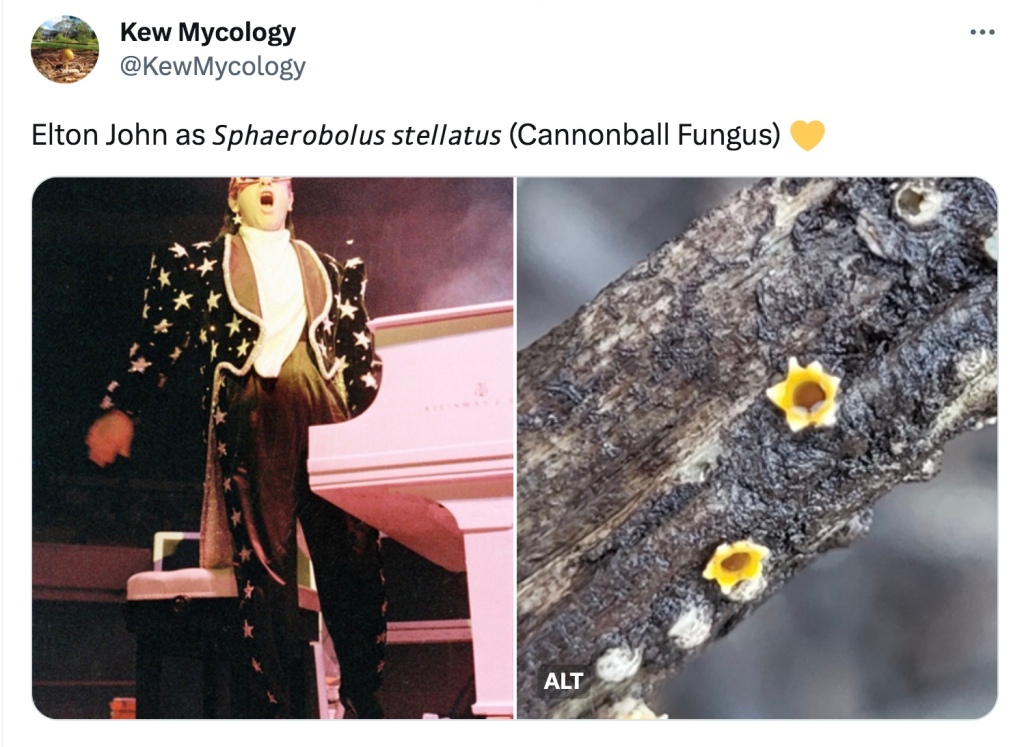
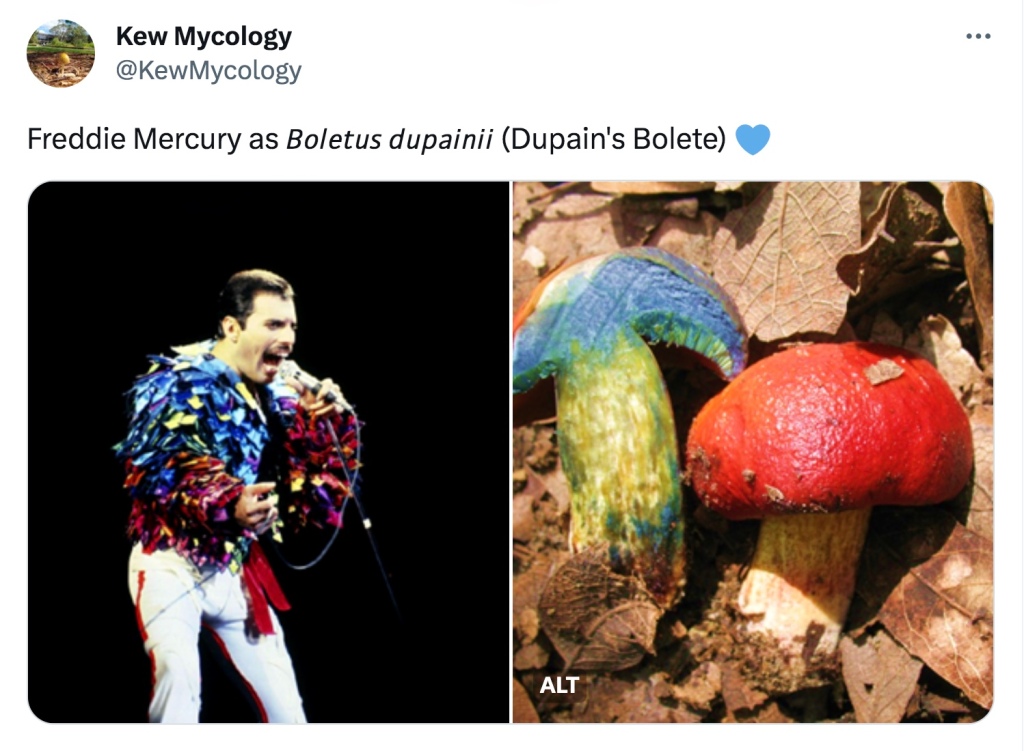
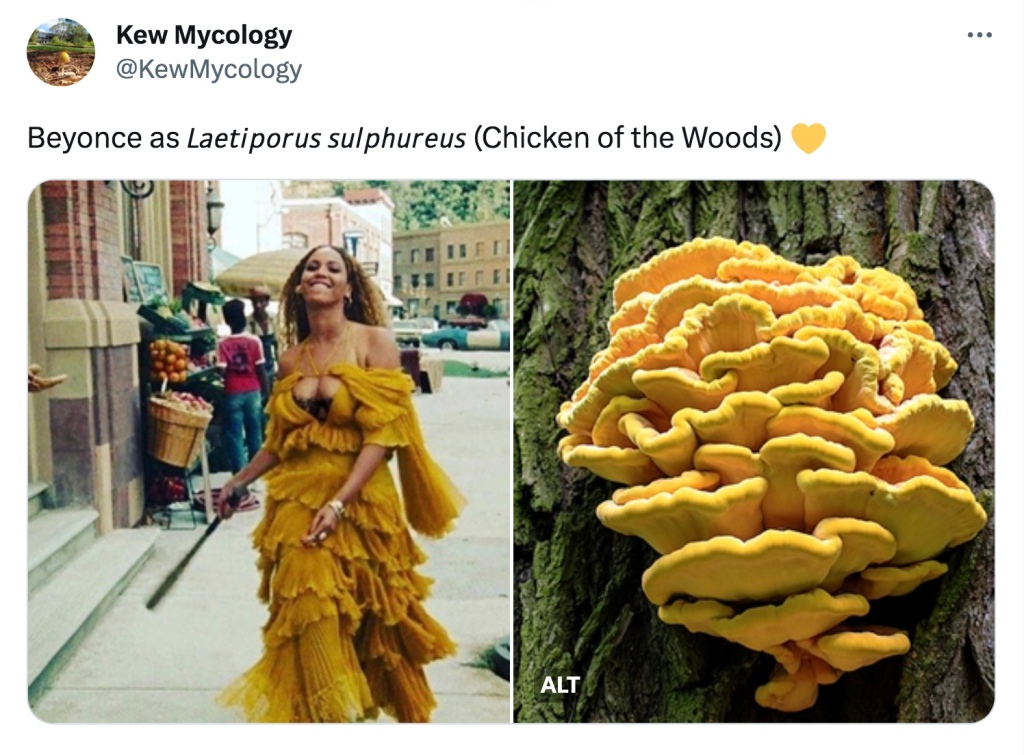
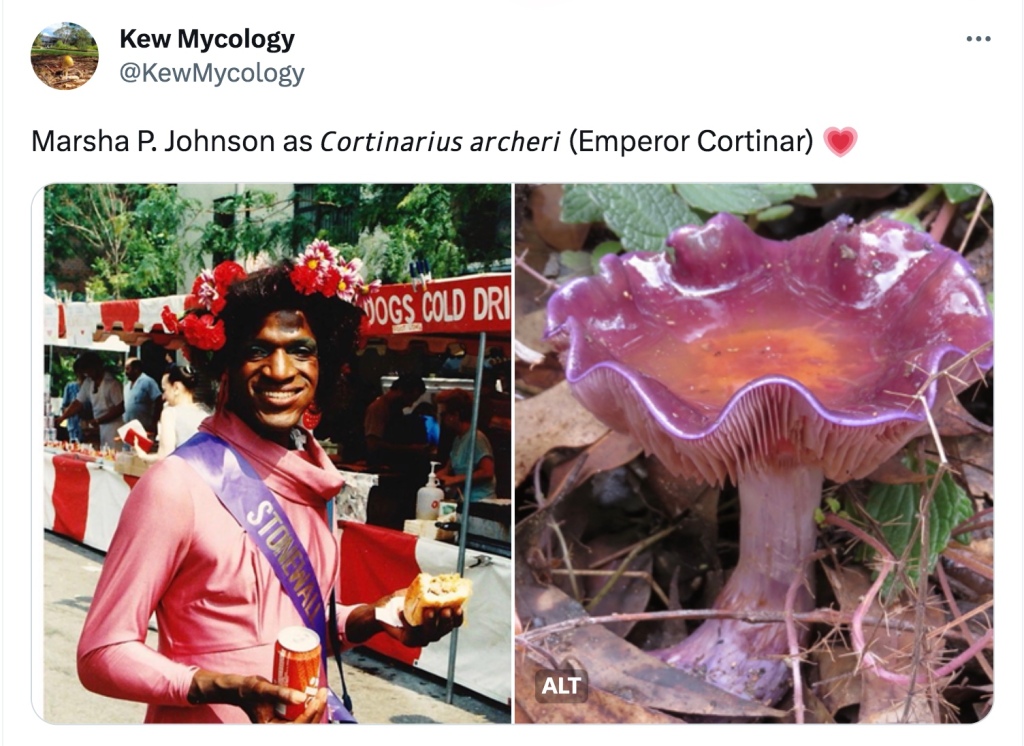
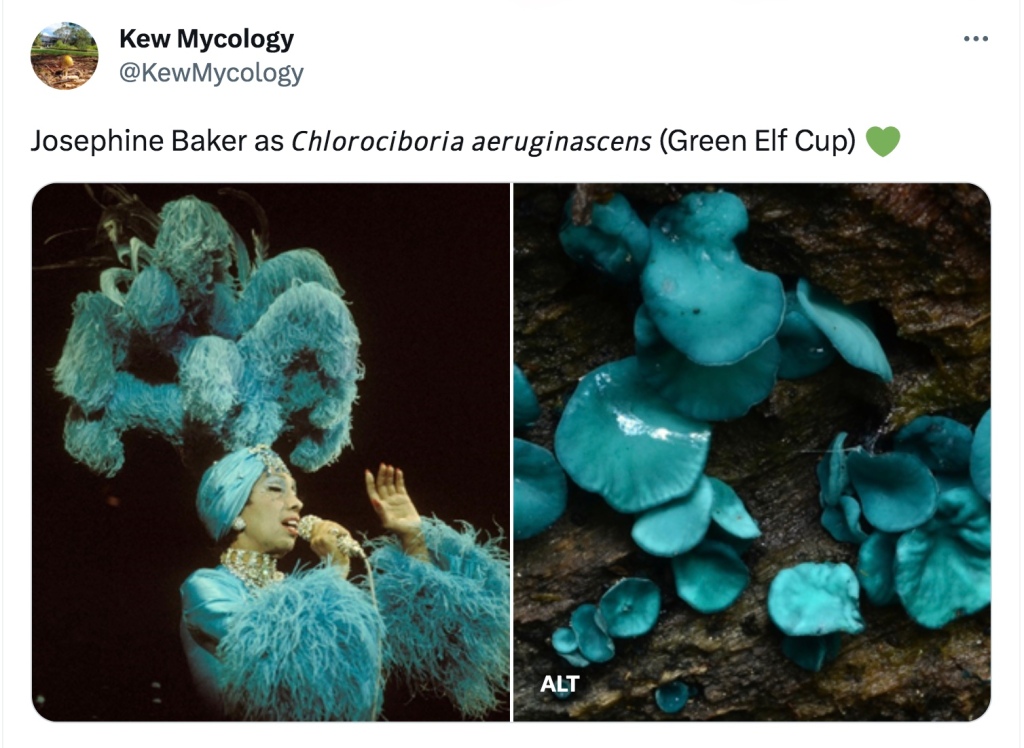
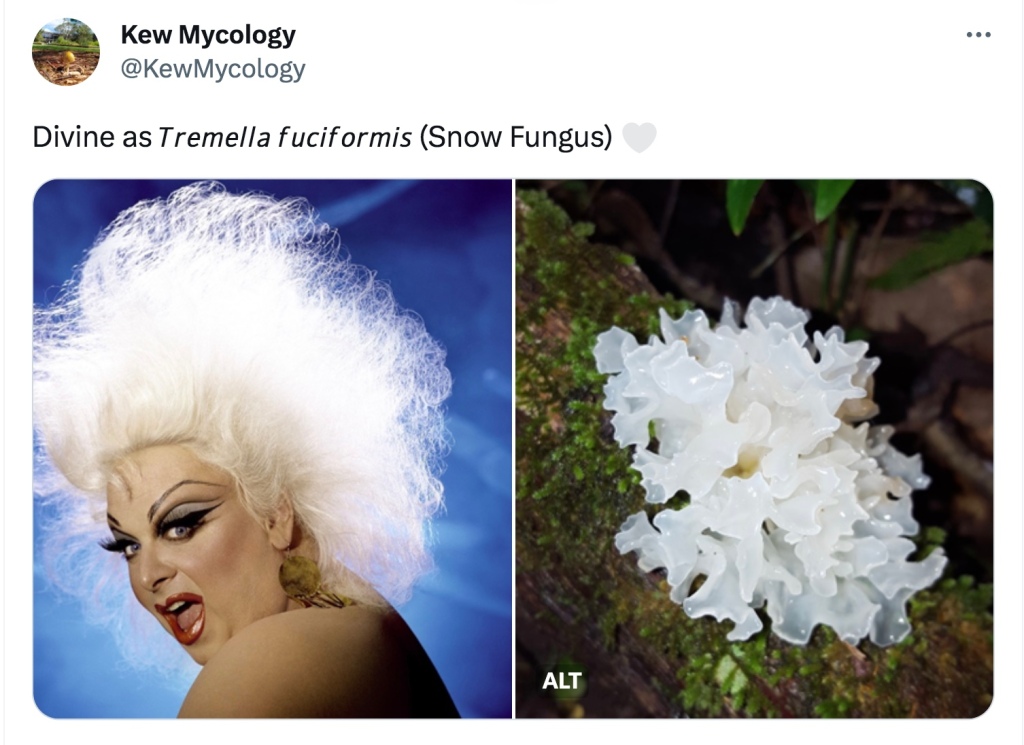
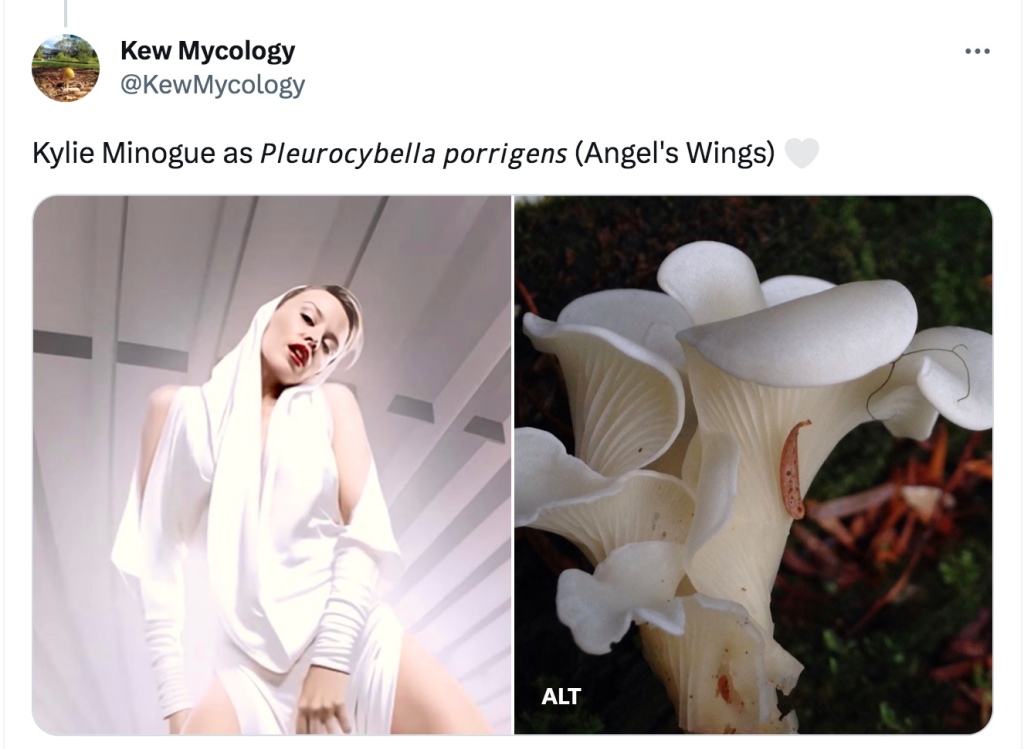

How to Make Simple Medicinal Mushroom Extracts (part one – the alcohol tincture)

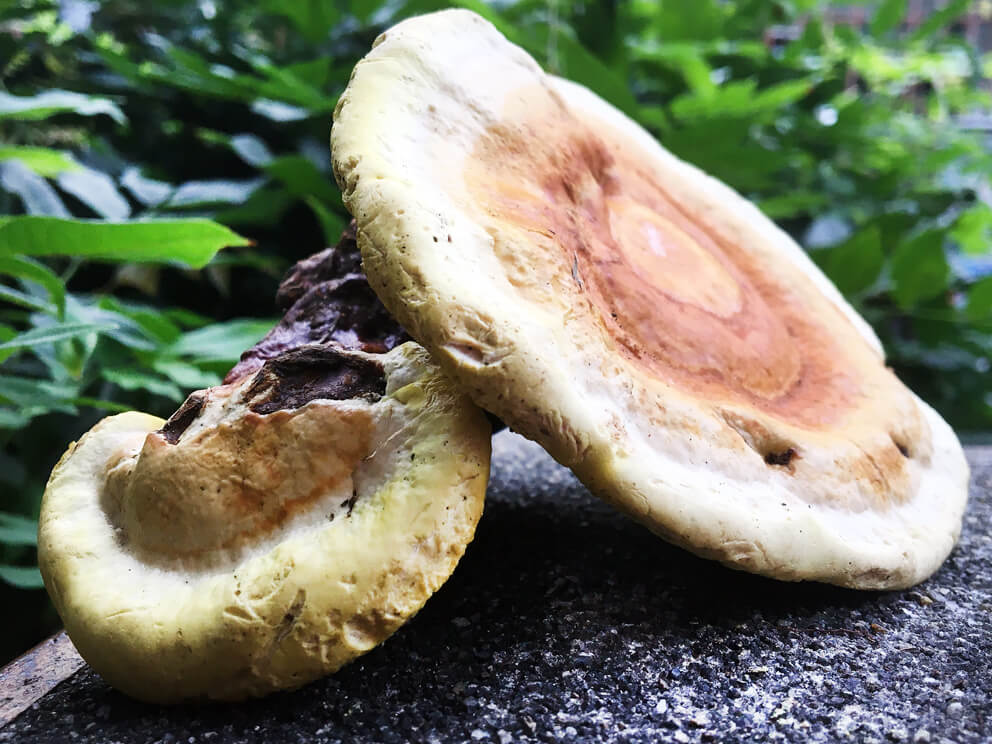
Reishi, aka Ganoderma lucidum, undisputed heavyweight champion of medicinal mushrooms. I harvested these for my extracts last July from the grounds of a forest temple here in Kyoto.
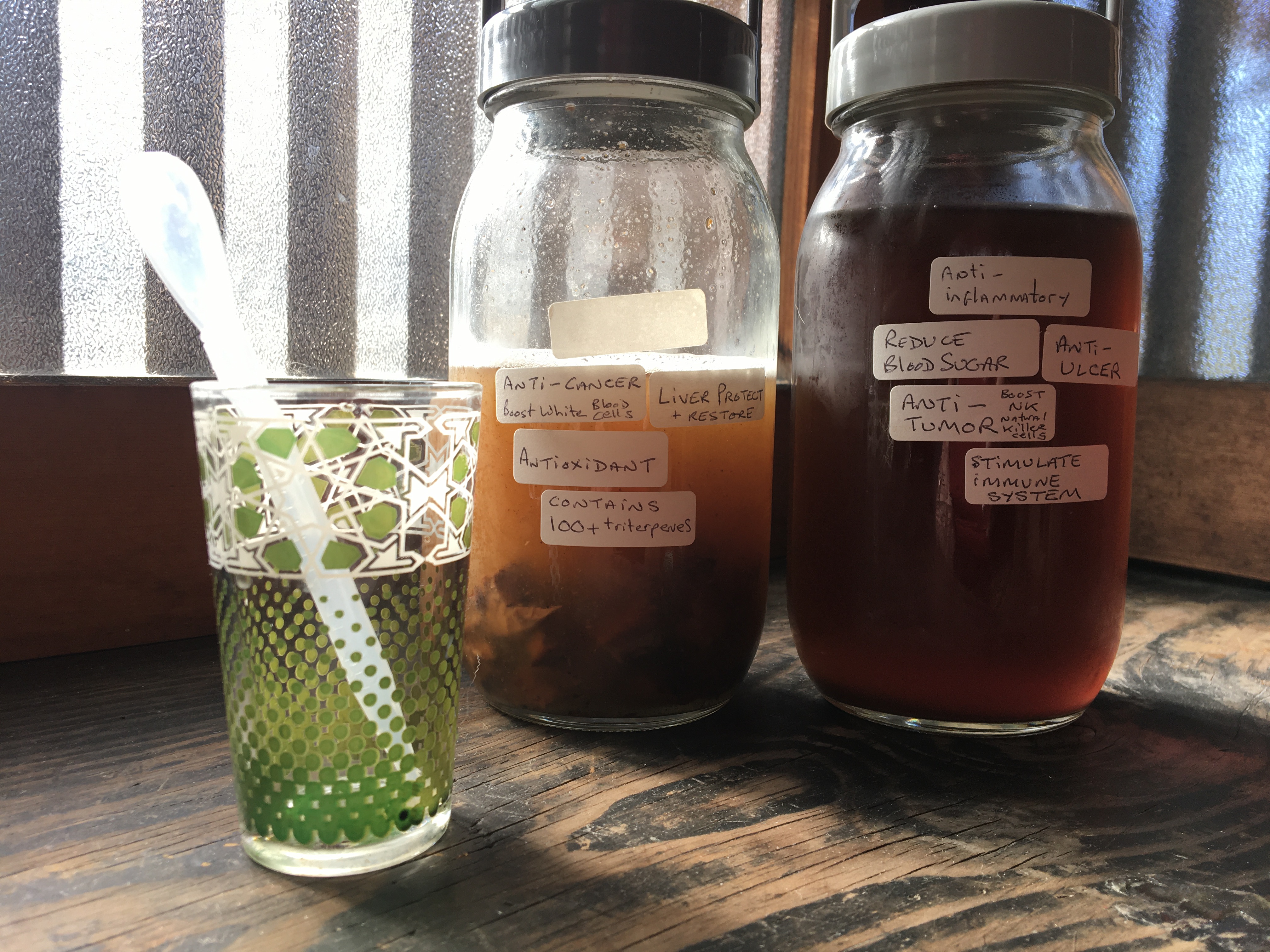
To the left, a tincture (alcohol extraction) to the right a decoction (water extraction). To get the most out of your medicinal mushrooms, combine the two in a single concoction (blend).
Greetings! If you are reading this, I take it you are interested in making some medicinal mushrooms, so here we go, I’ll outline the basics. Before we start, I should point out that I won’t be delving into complex techniques or terminology such as extraction ratios, (if you want to know about those, and bags of good info, check here), or carefully measuring out each milligramme and milliliter of ingredients. Nor am I talking industrial scale production. I’ll just show how I make medicinal mushroom extracts, for me and my significant other, here in our small wood and paper house in Kyoto, Japan. I’ll keep it simple.
By the way, it’s a long post. You might like to pull up a chair.
From start to finish the process takes about 4 weeks, less if you are in a hurry. The most complex equipment you’ll need is a big pan, or pressure cooker, and some glass jars.
Double, Double, Boil & Bubble
The method I’ll describe is what is known as a double or dual extraction. Simply put, mushrooms contain health-giving components that need to be eked out using one of two methods: boiling in water, or steeping in alcohol. If you only do one part of the two-step process, fine, but you’ll miss out on half the good stuff. More on the good stuff later.
If you are going to use mushrooms you found in the forest, don’t forget the mushroom gatherer’s timeless advice: “All wild mushrooms are edible. Once”.
Firstly, you’ll need some mushrooms. I am fortunate, living in Japan, in that I can source fresh medicinal mushrooms – maitake, shiitake, enokidake, shimeji, etc – inexpensively at farmer’s markets and organic stores and supermarkets pretty much year-round. My Kyoto house is not far from the hills, so foraging is not difficult either. I’ll write more about that another time, but if you are going to use mushrooms you found in the forest, don’t forget the mushroom gatherer’s timeless advice: All wild mushrooms are edible. Once.
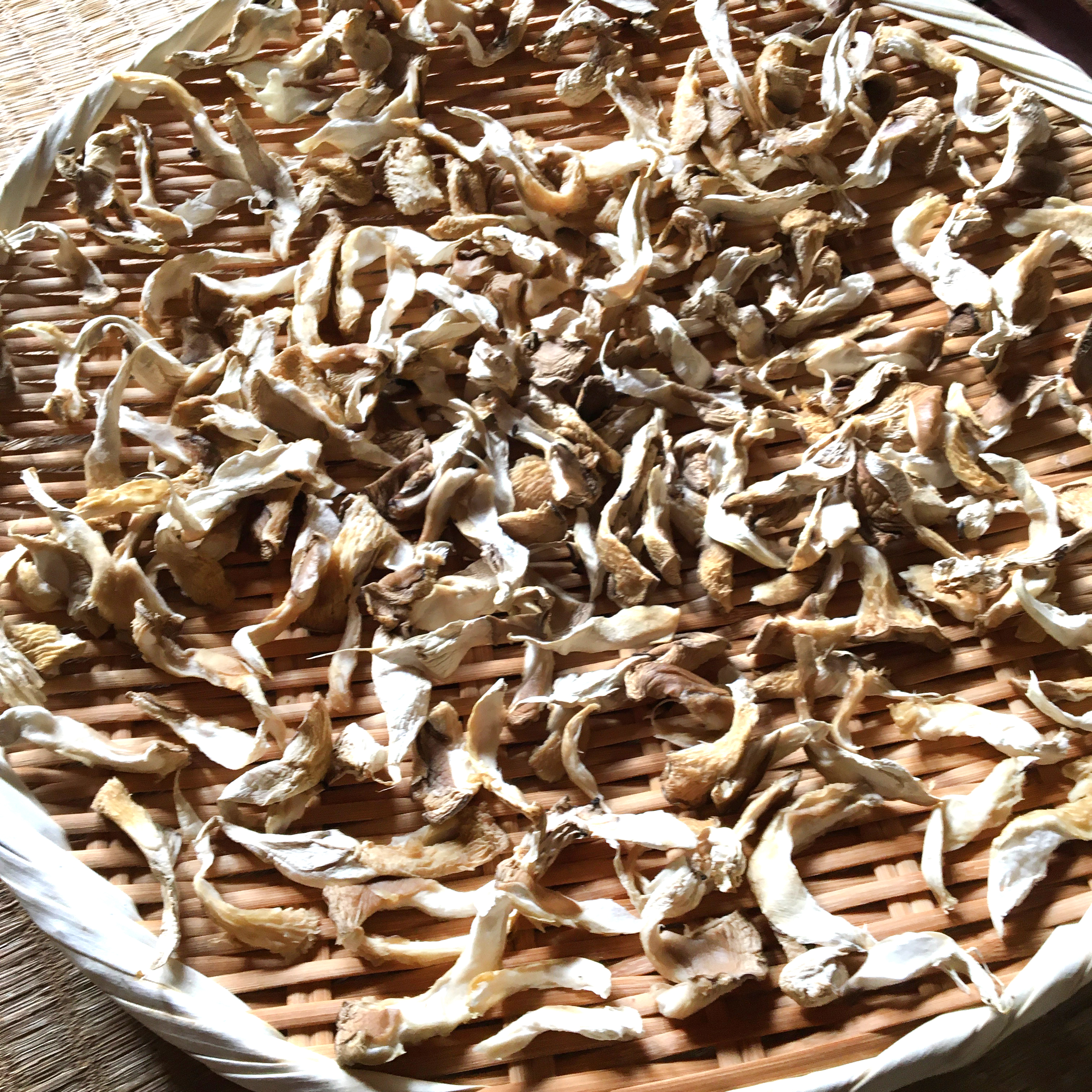
Sun drying Yanagimatsutake. Get double quantity and make a risotto with the other half. Awesome!
I almost always use dried mushrooms when making my concoctions (that’s not a rude word in these circles, by the way). Using fresh mushrooms is fine, but sun drying ups the Vitamin D content exponentially (good for vegans and vegetarians), and of course it makes storing and handling that much easier.
While we are here, drying some species of mushroom – porcini, yanagimatsutake, cèpes, boletes – then reconstituting them by adding water, makes them even tastier than when fresh. There’s a chemical explanation for this, I’m sure. I just don’t know what it is. Flavonoids? This man likely knows the answer.
First, take some Mushrooms
So, here we go. First, take your mushrooms, make sure they are clean, chop them into small pieces, dry them, and you are ready to go. Sounds easy, right? Well, it is, unless of course one of the mushrooms you have chosen happens to be or good friend, the incomparable, Ganoderma lucidum or reishi. These are seriously tough mushrooms. Literally tough. Not so long ago my mushroom comrade in arms Irish Tom and I managed to splinter an electric saw blade trying to slice up a particularly feisty example.
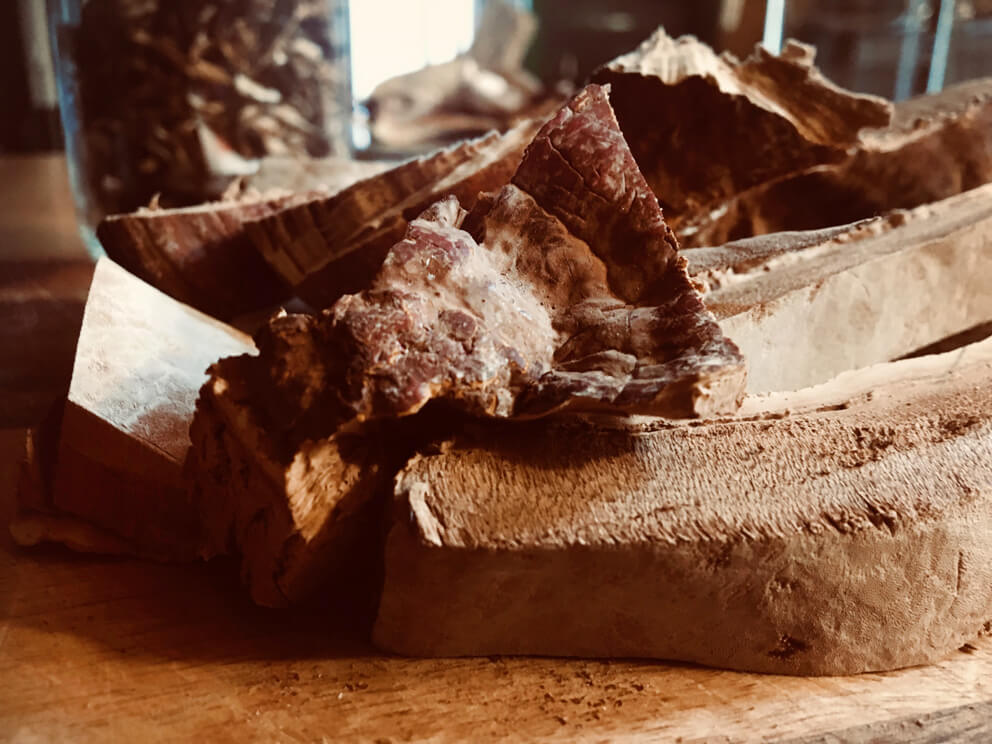
Look for grain to cut across when slicing reishi. The first cuts across the cap are the toughest. Across the slice is easier.
A simple way to get around the problem is to buy ready-cut reishi chips, or commercially-produced dried mushrooms which are generally easy (easier, more accurately) to slice. For the latter a good heavy-handled knife is handy, as is a hefty chopping board on a stable surface. Experiment slicing across the cap until you find a ‘grain’ that is easier to follow. Even with store-bought reishi, expect to work up a sweat. You might like to play some relaxing music. Or thrash metal. For a super hard shroom from the forest you’ll need a saw.
Fortunately, many dried mushrooms are easy to make smaller, and often you can pull them apart by hand – a very satisfying feeling (or is that just me?) – or cut them with kitchen scissors. Some crumble to the touch.
The choice of mushrooms is pretty much up to you, and of course you can include different mushroom species in one concoction. If you are creating a medicinal mushroom extract to suit a particular health condition, or to protect in advance against a certain ailment, then you can tailor your mycological ‘mix and match’ to suit. I’ll write on which mushrooms are most suitable for which conditions here at a later date.
Steep, then Boil (or, if you fancy it, boil, then steep)
To recap, we are looking at a duel extraction process here, with two steps, using alcohol and water. That is to say, steeping the mushrooms in alcohol (making a tincture) and boiling the mushrooms in water (making a decoction). You can do this with the same batch of mushrooms. Indeed, this is the least wasteful approach, and the most cost effective. You get more out of your mushrooms this way.
However, if you decide to make a tincture with one batch of mushrooms, and a decoction with another set of mushrooms – the other half of your harvest, perhaps – and keep them separate, that’s fine too.
 There is some debate in which order you should do the dual extraction. I’m a steep first, boil later guy. Some dudes go for the boil, then steep. Huh? It’s a bit like Jonathan Swift’s debate over which end you should eat your boiled egg from. I guess I’m a Big Endian, Steep Firster. There is evidence that both processes, whichever you choose, may slightly reduce the effectiveness of the second step, but for our purposes, the difference is negligible. My reason for steeping in alcohol first is that it is easy, and I’m putting off the (only slightly) less easy bit till later.
There is some debate in which order you should do the dual extraction. I’m a steep first, boil later guy. Some dudes go for the boil, then steep. Huh? It’s a bit like Jonathan Swift’s debate over which end you should eat your boiled egg from. I guess I’m a Big Endian, Steep Firster. There is evidence that both processes, whichever you choose, may slightly reduce the effectiveness of the second step, but for our purposes, the difference is negligible. My reason for steeping in alcohol first is that it is easy, and I’m putting off the (only slightly) less easy bit till later.
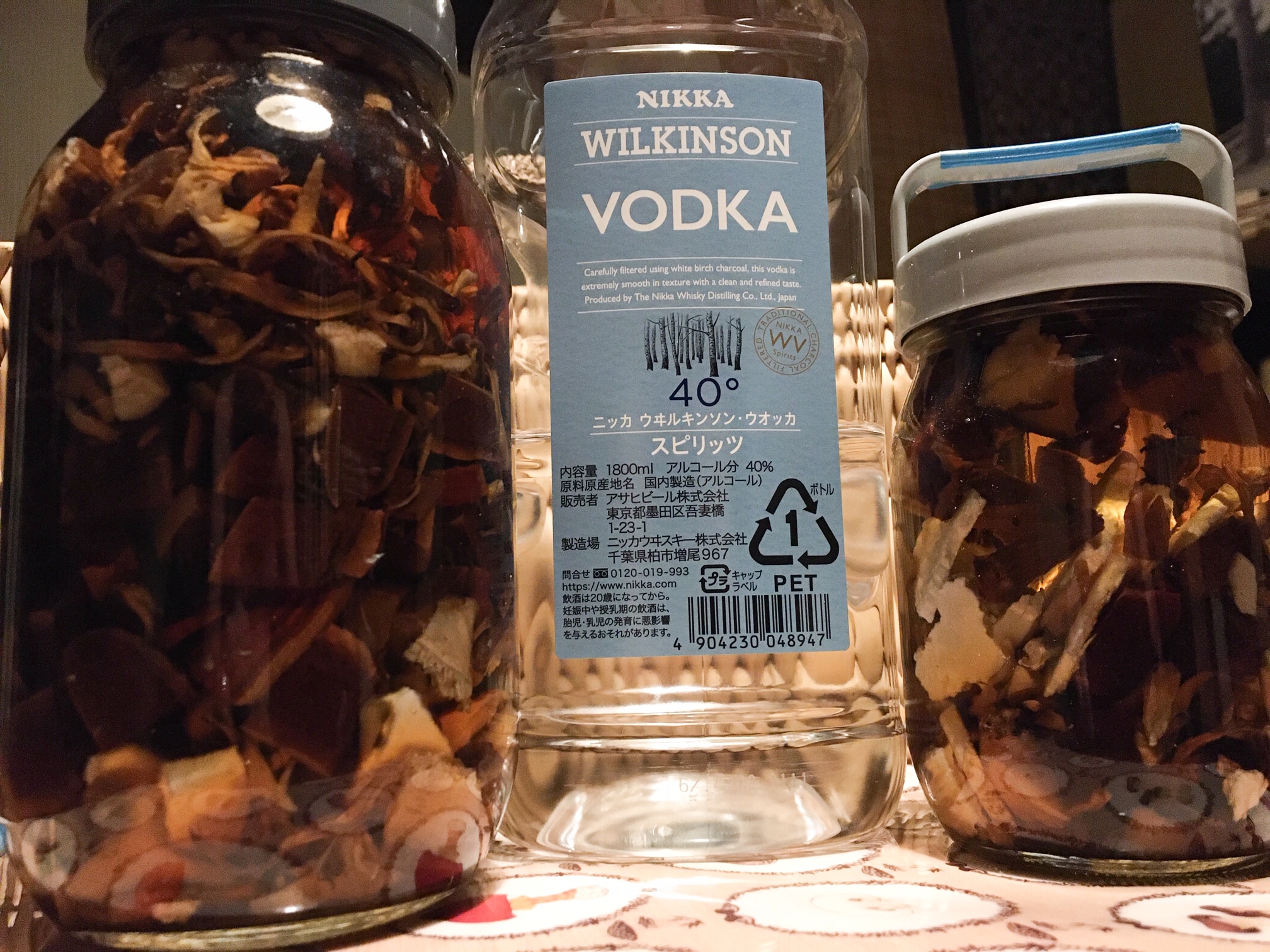
First step: steep your mushrooms in alcohol. 40% – 50% proof vodka is just the job.
Making the tincture (at last, I hear you say)
Clean a large glass jar, and fill to the half way point with your mushrooms. Then fill to the brim with 40~50% proof vodka. Try to not let any air remain. As you’ll see from the above, there’s no point in splashing cash with fine quality alcohol, as your final concoction will taste of, well, mushrooms. With reishi in there, bitter mushrooms.
A jar with a handle on top is, well, handy, as you can easily agitate it, that is to say, shake it up and down like someone possessed. To get the most from your mushrooms it is recommended you do this daily, but it’s not a catastrophe if you forget. Whilst agitating I suggest you put on a Pointer Sisters record and pretend to yourself you are doing a 1980s aerobics workout. Just don’t let anyone see you do this. If you are reading this in Japan, Seria has perfect jars at ¥100 a pop.
Leave your medicinal mushrooms in a cool, dark place for 4 weeks, agitating daily. That can include making ‘F#c% Trump!’ placards and encouraging youth to vote. Over time the mixture may cloud, but worry not, that’s normal. A water extraction clouds even more so.
I recommend you label your jars with the date laid down, the type of mushrooms within, and whether the contents are a tincture (alcohol) or an extraction (water). It’s easy to forget, if you don’t. You can scrawl on them with a marker pen, or print dainty labels. I like to label mine in, er, Latin. Yes, I know the ‘Pretentious, moi?’-ometer just broke off the top of the scale, but I like it. There’s also another reason for using scientific names, which I’ll get to in another post sometime. Et voilà, your tincture.
Come back here in four weeks for the next exciting installment, aka, How to Make Simple Medicinal Mushroom Extracts (part two – the water decoction).
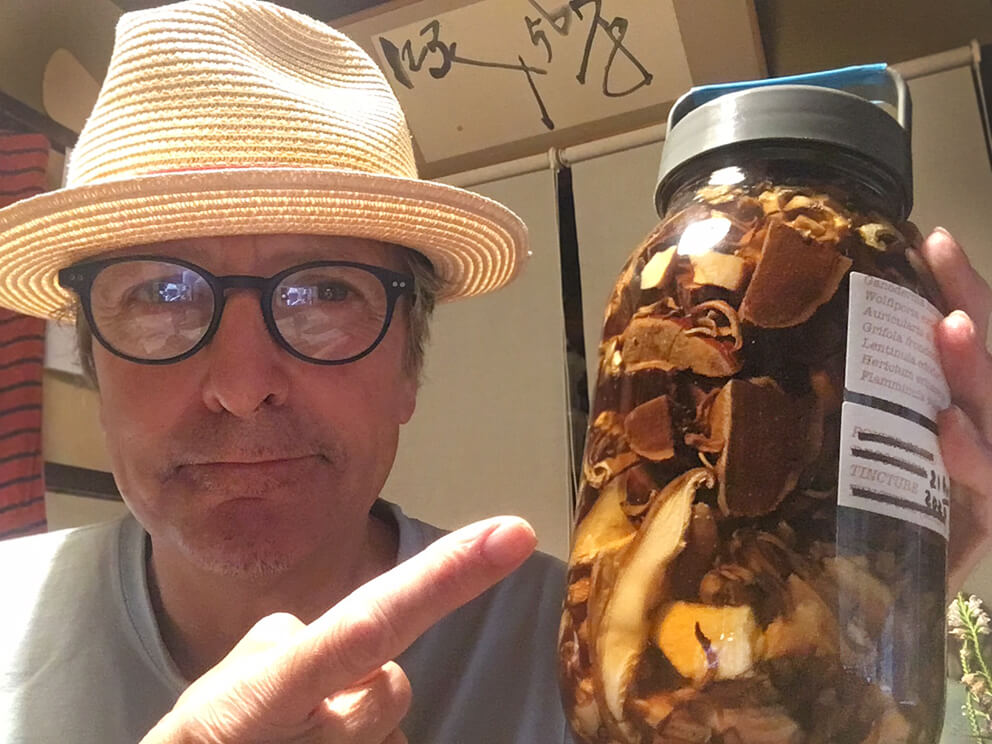
Store your tincture in a cool, dark place for about four weeks, agitating daily. Yeah!
